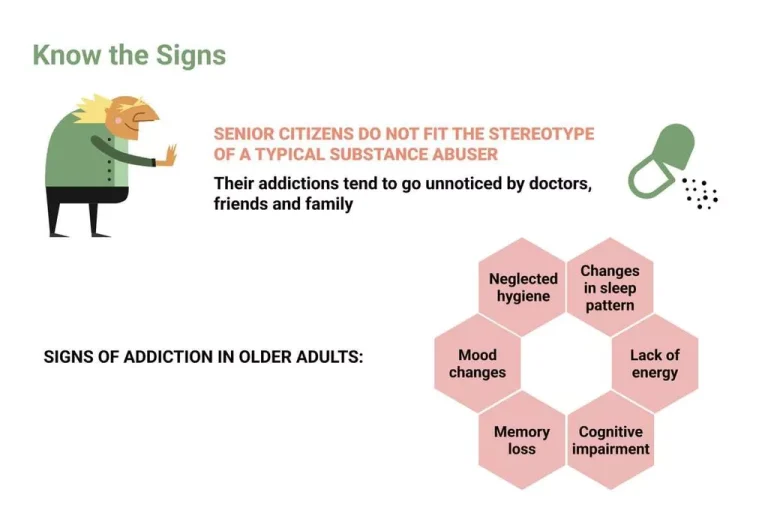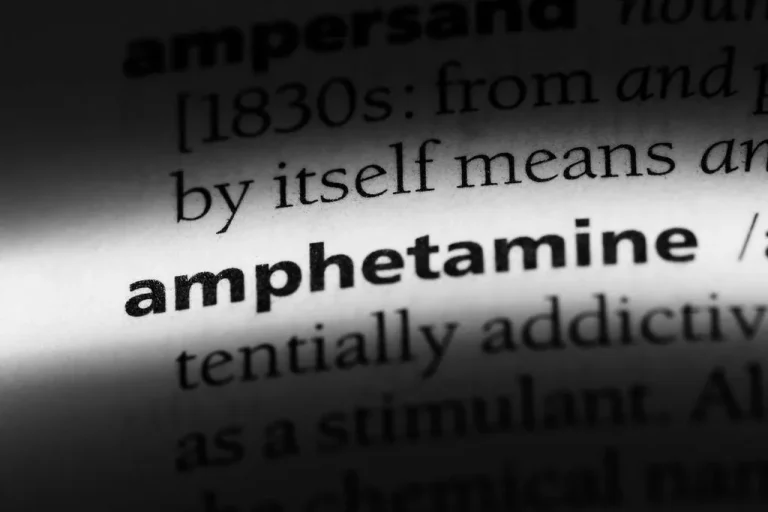
Of these, the central nucleus of the amygdala—a brain region important in the regulation of emotional states—is particularly sensitive to suppression of alcohol drinking by compounds that act on the GABA systems (i.e., GABAergic compounds) (Hyytia and Koob 1995). Indeed, acute and chronic alcohol exposure produce increases in GABA transmission in this brain region (Roberto et al. 2003, 2004a). Physical dependence is characterized by withdrawal symptoms that appear when you stop drinking and are able to be alleviated after drinking alcohol.
What Effects can Alcohol Have on My Mental Health?
Access varied considerably from one in 12 in the North West to one in 102 in the North East of England (Drummond et al., 2005). In terms of productivity, alcohol contributes to absenteeism, accidents in the workplace and decline in work performance. Up to 17 million working days are lost annually in the UK due to alcohol-related absences and 58,000 working years are lost annually due to premature deaths related to alcohol (Leontaridi, 2003). Alcohol misuse can also lead to job loss and over 38,000 people of working age in England were claiming Incapacity Benefit with a diagnosis of ‘alcoholism’ – nearly 2% of all claimants (Deacon et al., 2007). Alcohol dependence is also a category of mental disorder in DSM–IV (APA, 1994), although the criteria are slightly different from those used by ICD–10.
- Partners of people with harmful alcohol use and dependence experience higher rates of domestic violence than where alcohol misuse is not a feature.
- Not everyone with alcohol dependence, therefore, experiences physiological dependence.
- As a result, loss of dose control becomes a serious symptom of the development of alcohol disorder.
- The brain’s endogenous opioid system is also affected by alcohol (Oswald & Wand, 2004).
- 3In operant procedures, animals must first perform certain response (e.g., press a lever) before they receive a stimulus (e.g., a small amount of alcohol).
- Another molecule involved in regulating the body’s stress response is called neuropeptide-Y (NPY).
Brain Circuits Mediating Alcohol Reinforcement
Using alcohol during adolescence (from preteens to mid-20s) may affect brain development, making it more likely that they will be diagnosed with AUD later in life. However, most people with AUD—no matter their age or the severity of their alcohol problems—can benefit from treatment with behavioral health therapies, medications, or both. As individuals continue to drink alcohol over time, progressive changes may occur in the structure and function of their brains. These changes can compromise brain function and drive the transition from controlled, occasional use to chronic misuse, which can be difficult to control. The changes can endure long after a person stops consuming alcohol, and can contribute to relapse in drinking.
Neural Predictors of Treatment Compliance Identified in Hoarding Disorder Therapy
They can offer advice on how to approach your treatment and assist you with the process of detoxing, withdrawing, and recovering from alcohol use disorder. Everyone’s experience with alcohol is different, but effective treatments are available, whether your condition is mild, moderate, or severe. Delirium tremens is a symptom of severe alcohol withdrawal that can be potentially fatal. Contact emergency services immediately if you experience symptoms such as fever, involuntary muscle contractions, seizures, delusions, hallucinations, or rapid mood swings as you withdraw from alcohol. The official move away from the terms “abuse” and “dependence” in the DSM-5 is also reflective of a shift in how professionals talk about alcohol and substance use. The language used in the past often served to stigmatize people who are affected by alcohol use disorder.
Reward Circuits and Neurotransmitter Systems
Consuming alcohol, even in small amounts, starts affecting the body almost immediately. It slows down communication pathways in the brain, which can alter mood, behaviour, and coordination. Physiologically, alcohol increases heart rate and dilates blood vessels, causing temporary feelings of warmth, flush appearance, and, in some cases, decreased muscle control. Understanding these immediate effects is crucial for recognising how alcohol consumption can escalate from casual use to dependency.
Why Should We Be Concerned About AUD and Alcohol Addiction?

Further, they were more likely to have a family history of alcohol misuse, and began drinking and developed alcohol dependence earlier than those without such a history. Multiple options exist for the management of dependence on alcohol, not all of which are approved by drug-regulating agencies. Current practice in treating AUD does not reflect the diversity of pharmacologic options that have potential to provide benefit, and guidance for clinicians is limited.
So, how do you know whether or not you are developing a physical dependency on alcohol? Often, people drink to try and reduce symptoms (sometimes known as ‘self-medicating’), but in the long-term alcohol makes these disorders worse because it interferes with the chemical balance in our brains. Stressful events, such as bereavement or losing a job, can also trigger heavy drinking in some people, which can then lead to alcohol dependence.
Relapse represents a major challenge to treatment efforts for people suffering from alcohol dependence. To date, no therapeutic interventions can fully prevent relapse, sustain abstinence, or temper the amount of drinking when a “slip” occurs. For some people, loss of control over alcohol consumption can lead https://sober-home.org/ to alcohol dependence, rendering them more susceptible to relapse as well as more vulnerable to engaging in drinking behavior that often spirals out of control. Many of these people make numerous attempts to curtail their alcohol use, only to find themselves reverting to patterns of excessive consumption.

Therefore assessment should not be narrowly focused on alcohol consumption, but should include all areas of physical, psychological and social functioning. As noted earlier, people who are alcohol dependent have higher rates of comorbidity with other psychiatric disorders, particularly depression, anxiety, post-traumatic stress disorder (PTSD), psychosis and drug misuse, than people in the general population. Alcohol can, temporarily at least, reduce the symptoms of anxiety and depression, leading to the theory that alcohol use in this situation is a form of ‘self-medication’. This theory, however, lacks clear experimental support, and the longer-term effects of alcohol worsen these disorders.
As has been noted previously, relationships with parents, carers and the children in their care are often damaged by alcohol misuse (Copello et al., 2005). The prevalence of alcohol-use disorders in the victims and perpetrators of domestic violence provides an important rationale for the exploration of these issues. Sexual abuse has been found to be prevalent in alcohol dependent drinkers seeking treatment and may be a particular concern with young people with alcohol misuse problems (Moncrieff et al., 1996).
The table summarizes the effects of interventions with these signaling systems on various aspects of positive and negative reinforcement. A recent alcohol needs assessment in England identified nearly 700 agencies providing specialist alcohol treatment, with an estimated workforce of 4,250 and an annual spend of between £186 million and £217 million (Drummond et al., 2005; National Audit https://sober-home.org/performance-enhancing-drug-use-in-recreational/ Office, 2008). The majority of agencies (70%) were community based and the remainder were residential, including inpatient units in the NHS, and residential rehabilitation programmes mainly provided by the non-statutory or private sector. Overall, approximately half of all alcohol services are provided by the non-statutory sector but are typically funded by the NHS or local authorities.
Therefore, appropriate liaison with criminal justice services is essential for this group. People who are alcohol dependent and who have recently stopped drinking are vulnerable to relapse, and often have many unresolved co-occurring problems that predispose to relapse (for example, psychiatric comorbidity and social problems) (Marlatt & Gordon, 1985). This should include interventions aimed primarily at the drinking behaviour, including psychosocial and pharmacological interventions, and interventions aimed at dealing with co-occurring problems. The brain’s endogenous opioid system is also affected by alcohol (Oswald & Wand, 2004).
According to information from the National Institutes of Health, these discomforts usually peak 24 to 72 hours after your last drink, but they may last for weeks. Opioid systems influence alcohol drinking behavior both via interaction with the mesolimbic dopamine system and also independent of the mesolimbic dopamine system, as demonstrated by alcohol-induced increases in extracellular endorphin content in the nucleus accumbens (see figure 2) (Olive et al. 2001). Opioid receptor antagonists interfere with alcohol’s rewarding effects by acting on sites in the ventral tegmental area, nucleus accumbens, and central nucleus of the amygdala (Koob 2003). An alternative to operant procedures, free-choice responding allows researchers to examine alcohol consumption and preference in rats in their home-cage environment. In this procedure, alcohol is available to the animals via normal drinking bottles in the home cage. Free-choice procedures incorporate a variety of experimental manipulations, such as offering multiple bottles with different alcohol concentrations, varying the schedules of when and for how long alcohol is available, and adding flavorants to available solutions.
The physical harm related to alcohol is a consequence of its toxic and dependence-producing properties. Ethanol (or ethyl alcohol) in alcoholic beverages is produced by the fermentation of sugar by yeast. It is a small molecule that is rapidly absorbed in the gut and is distributed to, and has effects in, every part of the body. Most organs in the body can be affected by the toxic effects of alcohol, resulting in more than 60 different diseases.
Some 70% of men who assault their partners do so under the influence of alcohol (Murphy et al, 2005). Family members of people who are alcohol dependent have high rates of psychiatric morbidity, and growing up with someone who misuses alcohol increases the likelihood of teenagers taking up alcohol early and developing alcohol problems themselves (Latendresse et al., 2010). Alcohol is a toxic substance and its toxicity is related to the quantity and duration of alcohol consumption. In the brain, in a single drinking episode, increasing levels of alcohol lead initially to stimulation (experienced as pleasure), excitement and talkativeness. At increasing concentrations alcohol causes sedation leading to sensations of relaxation, then later to slurred speech, unsteadiness, loss of coordination, incontinence, coma and ultimately death through alcohol poisoning, due to the sedation of the vital brain functions on breathing and circulation. There is a wide range of other environmental factors that predispose to the development of alcohol-use disorders (Cook, 1994).
Glutamate is the major excitatory neurotransmitter in the brain; it exerts its effects via several receptor subtypes, including one called the N-methyl-d-aspartate (NMDA) receptor. Glutamate systems have long been implicated in the acute reinforcing actions of alcohol, and alcohol effects perceived by an organism can be mimicked with NMDA receptor antagonists (Colombo and Grant 1992). In contrast to its effects on GABA, alcohol inhibits glutamate activity in the brain. For example, acute alcohol exposure reduces extracellular glutamate levels in a brain region called the striatum, which contains the nucleus accumbens, among other structures (Carboni et al. 1993).
Being dependent on alcohol means a person feels they’re not able to function or survive without it and that drinking becomes an important – or sometimes the most important – factor in their life. Al-anon uses the same 12 steps as AA with some modifications and is focused on meeting the needs of friends and family members of alcoholics. Again, meetings are widely available and provide helpful support beyond what can be provided by specialist treatment services. The 2004 ANARP found that only one out of 18 people who were alcohol dependent in the general population accessed treatment per annum.
Similarly, alcohol may inhibit release of the excitatory neurotransmitter glutamate from nerve terminals that act on neurons in the nucleus accumbens. Many additional mechanisms (not shown) are proposed, through which alcohol may act on these pathways. Some evidence suggests that alcohol may activate endogenous opioid pathways and possibly endogenous cannabinoid pathways (not shown). The brain is a delicate and intricate organ that must maintain a careful balance of chemicals, called neurotransmitters, for a person to function properly. Alcohol intoxication can disrupt this fine balance, disturbing the brain’s natural equilibrium, and long-term, chronic use forces a person’s brain to adapt in an effort to compensate for the effects of alcohol.
The UK Cabinet Office recently estimated that the cost of alcohol to society was £25.1 billion per annum (Department of Health, 2007). A recent report by the Department of Health estimated an annual cost of £2.7 billion attributable to alcohol harm to the NHS in England (Department of Health, 2008a). Hospital inpatient and day visits accounted for 44% of these total costs, whilst accident and emergency department visits and ambulance services accounted for 38%. However, crime and disorder costs amount to £7.3 billion per annum, including costs for policing, drink driving, courts and the criminal justice system, and costs to services both in anticipation and in dealing with the consequences of alcohol-related crime (Prime Minister’s Strategy Unit, 2003). The estimated costs in the workplace amount to some £6.4 billion through lost productivity, absenteeism, alcohol-related sickness and premature deaths (Prime Minister’s Strategy Unit, 2003). The first category of costs is that of treating the medical consequences of alcohol misuse and treating alcohol misuse.
























